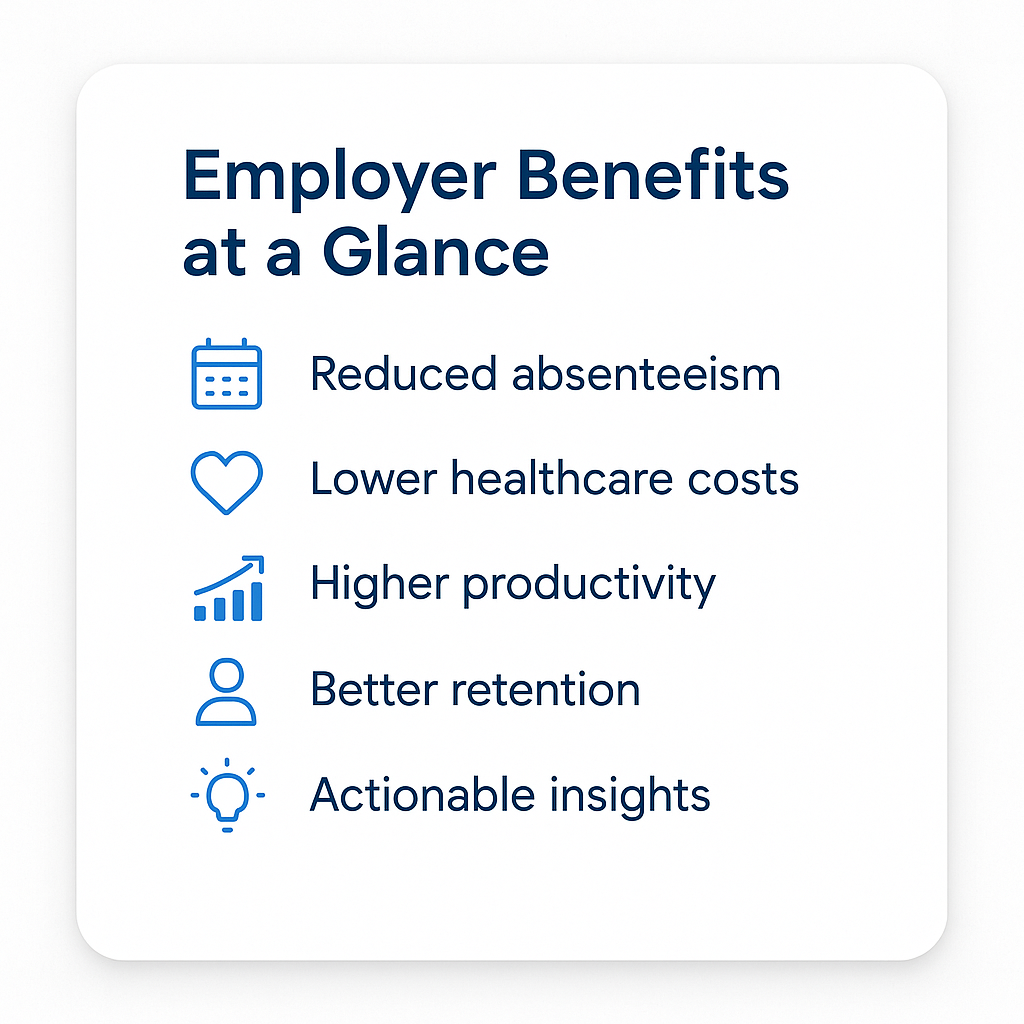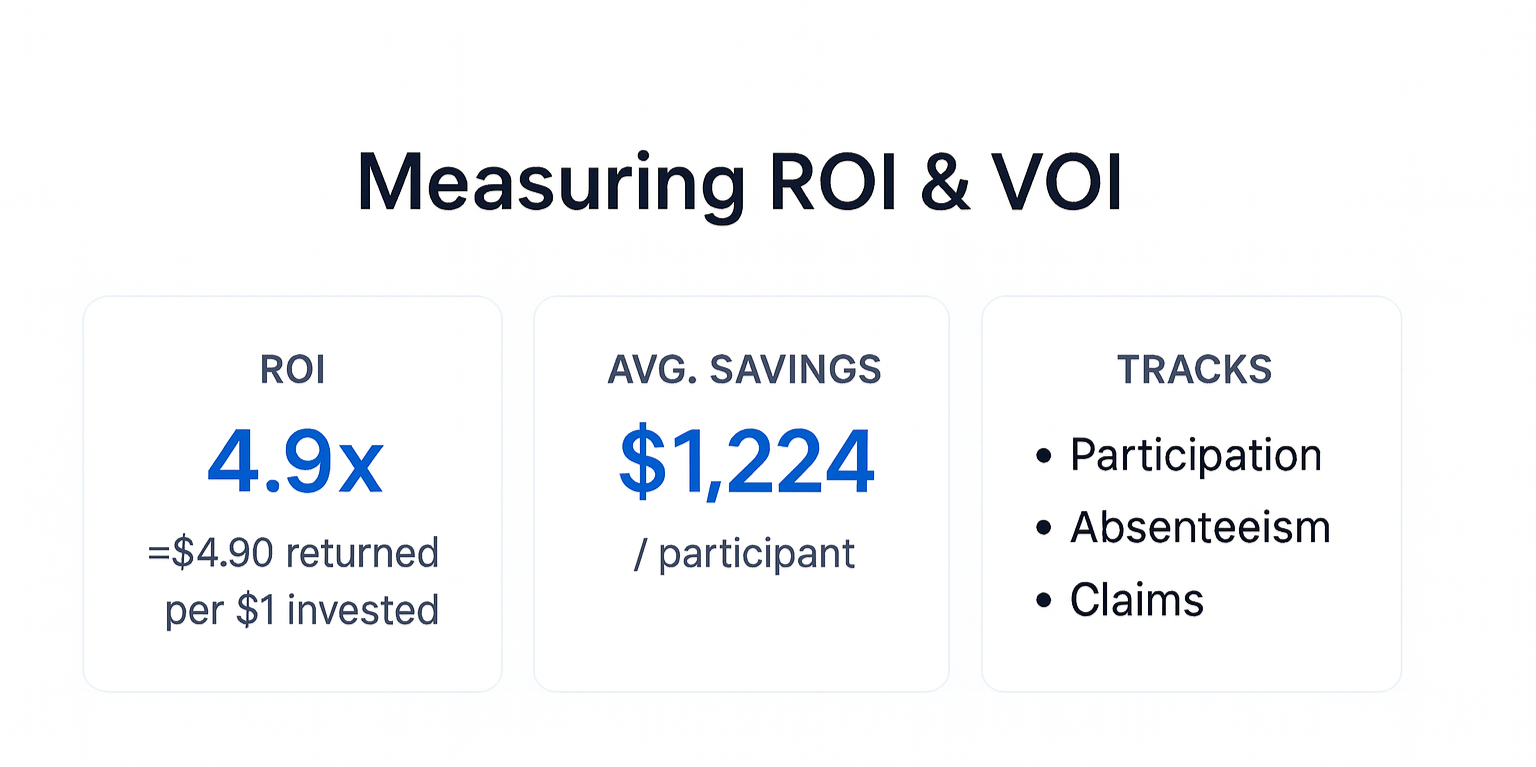Table of Contents
Introduction
Employee wellness programs have shifted from a nice-to-have perk to an essential tool for successful companies. With organizations demanding more measurable outcomes, platforms have risen to become the backbone of successful wellness initiatives. This guide explores what employee wellness software is, the features that matter, and the benefits for employers and employees. We’ll delve into selecting the right platform, how to implement it successfully, and what future trends mean for your organization.

What Is Employee Wellness Software?
Employee wellness software refers to digital platforms that help organizations design, deliver, and measure wellness programs. These tools centralize activities such as health assessments, fitness challenges, coaching, mental health resources, and analytics. The goal: improve employee wellbeing while delivering tangible business value.
Key functions include:
Program management and automation
Digital health assessments
Gamification and engagement tools
Integration with wearables and apps
Coaching and educational content
Analytics and reporting dashboards
Types of Wellness Platforms
Point solutions: Single-focus apps like step challenges or meditation. Good for short campaigns, but limited in scope.
Integrated platforms: Comprehensive solutions that cover physical, mental, and behavioral health. Ideal for organizations seeking long-term engagement.
Virtual coaching apps: Platforms that provide access to health coaches or AI-driven coaching on demand.
Enterprise vs. SMB solutions: Enterprise platforms are robust but costly; SMB-oriented platforms provide turnkey options at lower cost.
Shortlist Criteria:
Must-haves
MFA/SSO supported → fewer login issues and IT tickets
HRIS/benefits integration + auto eligibility sync → no CSV gymnastics
Proven >90-day engagement (WAU/challenge participation) → avoids the “January spike” drop-off
Reporting with ROI/VOI + CSV/API export → budget justification, not anecdotes
Privacy & security baseline (BAA on request, retention/deletion controls, published subprocessors) → employee trust
Nice-to-haves
Mobile app + accessible web → meets people where they are
Multilingual & multi-region scaling → future-proof growth
Coaching (live or digital) + content library → sustained behavior change
Wearable/app integrations → automatic tracking reduces friction
SOC 2 Type II / ISO 27001 evidence available on request → independent assurance
If a vendor misses 3+ boxes, don’t shortlist. “Available on request / supported” items are preferred, not blockers.
Benefits for Employers
Employee wellness platforms don’t just make people healthier. They create measurable business value. Research has shown:
Reduced absenteeism and presenteeism
Lower healthcare costs and insurance claims
Higher productivity and engagement
Improved retention and morale
Better data insights for workforce health
📊 A 2024 NIH-hosted study of a workplace program targeting cardiovascular risk reported net savings of $1,224 per participant and a 4.9:1 ROI.

Benefits for Employees
Employee wellness software isn’t just an HR tool. It’s a direct benefit to the people who use it. A 2025 meta-review concluded that digital wellness programs consistently improve employee health behaviors and mental wellbeing across multiple studies. In practice, that translates into:
- Convenient access to programs on any device
- Personalized health and fitness plans
- Better access to mental health and stress support
- Motivation through gamification and coaching tools
- Sustainable habits that lead to long-term lifestyle improvements
When employees see results they can feel, engagement climbs – and so does loyalty to the organization providing those tools.
How to Select a Platform
Not all wellness platforms deliver equal value. The right choice depends on how well a platform engages employees and integrates into your organization. Experts recommend looking for:
- Scalability to grow with your workforce
- Personalization and adaptability for diverse needs
- Integration with existing HR and benefits systems
- Strong security and data privacy protections
- Engagement tools like challenges, trackers, and coaching
- Transparent reporting and ROI measurement
⚠️ A 2023 systematic review found that wellness program ROI varies widely: programs with poor engagement or limited scope often fail to deliver measurable returns.
This makes due diligence essential. Choose a platform with a proven track record of adoption, clear metrics, and strong support resources to maximize impact.
Implementation Guidance: Rolling Out Wellness Software Successfully
Choosing the right software is only the first step. Effective implementation determines whether employees adopt and sustain use of the platform. A strong rollout plan should include the following steps.
Launch Checklist
Assess goals and workforce needs: Identify organizational goals, workforce needs, and desired outcomes before launch.
Align stakeholders: Involve HR, IT, leadership, and managers early to ensure buy-in and smooth integration.
Pilot test: Start with a small group to identify technical or engagement issues before company-wide deployment.
Onboard employees: Provide simple, clear instructions and training. Use launch campaigns to generate excitement.
Communicate progress: Share success stories, challenges, and reminders to keep momentum high.
Measure and adjust: Track participation, engagement, and outcomes regularly. Use data to refine your approach.
Without structured rollout steps, even the best software can fail to gain traction.
Compliance and Data Security in Wellness Software
For HR professionals, strong compliance isn’t just a technical requirement; it’s a foundation of employee trust and organizational credibility.
Employee wellness platforms handle sensitive health information, making compliance and data security non-negotiable. Organizations should evaluate platforms on:
HIPAA compliance for protecting health information in the U.S.
GDPR compliance if handling data from the EU workforce.
SOC 2 certification or equivalent audits for data security practices.
Encryption and access controls to safeguard sensitive employee records.
Transparent data usage policies so employees understand how their information is handled.
Highlighting strong compliance is not just about risk management. It builds trust with employees, which directly impacts engagement and adoption rates.
Compliance Checklist
HIPAA: Business Associate Agreement in place, PHI boundaries defined, minimum-necessary access enforced.
GDPR: Data Processing Agreement/SCCs, lawful basis documented, DPO/representative if required, data subject rights process.
Security framework: Current SOC 2 Type II or ISO 27001 evidence; encryption in transit (TLS 1.2+) and at rest (AES‑256).
Identity & access: Role-based access control, SSO/SAML 2.0, MFA, quarterly access reviews, clean offboarding.
Privacy UX: Clear notices, consent/opt-in flows, cookie controls, easily accessible privacy policy.
Data lifecycle: Up-to-date data inventory, retention/deletion schedule, geo-residency as needed, tested backups.
Vendors: Subprocessor list published, due diligence completed, right-to-audit language.
Monitoring: Audit logs retained, regular vulnerability scans and annual pen tests.
Incident response: Documented plan with breach notification timelines for HIPAA/state laws/GDPR.
Business continuity: DR plan with defined RTO/RPO targets and periodic failover tests.
Measuring ROI and VOI
To justify investment, organizations should measure both hard financial outcomes and softer value outcomes (VOI).

ROI 4.9: and $1,224 net savings per participant — based on a 2024 NIH/PMC workplace study targeting cardiovascular risk.
ROI examples:
Reduced medical claims
Fewer sick days
Lower turnover costs
VOI examples:
Employee morale
Employer brand strength
Culture of wellbeing
Future Trends in Wellness Software
AI-driven personalization: Tailored recommendations and nudges based on user data.
Wearable integration: Deeper use of real-time health data.
Mental health focus: Expanding tools for stress, burnout, and resilience.
Hybrid coaching: Blending live coaches with digital tools.
SMB-friendly platforms: Turnkey kits for small to midsize employers.
Conclusion
Employee wellness software isn’t a perk anymore; it’s a lever for healthier people and measurable results. The data is clear: programs that engage well can return ~4.9x ROI and ~$1,224 in savings per participant. The playbook is straightforward: use the Shortlist Criteria and the Launch Checklist in this guide to drive adoption and outcomes.
Ready to see it in action? Try our fully functional demo and see our plan pricing (no sales call required), or grab the $0 Wellness Toolkit to start planning.
FAQs
It is a digital platform that helps organizations design, deliver, and measure wellbeing programs across areas like activity, nutrition, stress, sleep, and coaching.
Pricing typically follows a per-employee-per-month model for the software, with optional add-ons such as live coaching, screenings, or incentives. Total cost depends on features, services, and scale.
Cloud-based wellness platforms can typically be deployed in days, not months. Many offer portal templates or preconfigured environments that let HR teams launch a branded, functional experience quickly—then customize content, automations, and integrations as needed for scale.
Single sign-on (SAML/OIDC), HRIS and benefits systems, messaging tools (email, Teams, Slack), and wearable/app connections are among the most valuable. These integrations streamline user access, improve data quality, and reduce administrative overhead.
Set clear goals and communicate them early. Provide quick wins through challenges or rewards, maintain momentum with reminders and recognition, and make mobile access effortless. Leadership support and manager toolkits further strengthen engagement.
Most leading wellness platforms use multiple layers of protection to keep sensitive information secure. Common safeguards include encryption in transit and at rest, role‑based access and MFA, and hosting within audited cloud environments such as Azure or AWS. Many vendors also align with privacy and security standards like ISO 27001, HIPAA, SOC 2, or HITRUST. Together, these measures help ensure data is handled responsibly and transparently.
Start by tracking engagement metrics such as logins, enrollments, and participation within the first 30 to 90 days. Over time, add behavior and wellbeing indicators, and assess broader outcomes such as absenteeism, turnover, and healthcare costs at six months, one year, and annually thereafter.
Author

Avidon Health is transforming how organizations promote healthier lifestyles through behavior change science and technology-driven coaching. Our mission is to empower individuals to achieve better health outcomes while driving measurable business success for our clients.With over 20 years of expertise in health coaching and cognitive behavioral training, we’ve built a platform that delivers personalized, 1-to-1 well-being experiences at scale.Today, organizations use Avidon to reimagine engagement, enhance health, and create lasting behavior change—making wellness more accessible, impactful, and results-driven.
